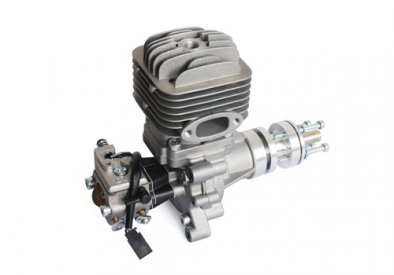The Easy Way to Make Your Model Airplane Start
Recently, I've looked into the forum, and there are some players who are complaining about the problems of starting the RC model airplane engine. Here I would like to share my own experience to all of you, hope that can do some help for you.
There are several tips you should pay attention to:
First is the position of the idle mixture, most of the RCers suggested that you should not move the idle mixture with the default from the original setting, I also agree with them. You should not to move the position of this idle mixture, otherwise, you will harder to restart it later. You should check other places to see whether there are some problems happen.
If you have move the position of this idle mixture, and your engine without any problems, the main needle with 1.5 circles, you can try to restart the engine again, and to increase the angle of the idle mixture with 20 degrees from the start of rich oil, and until the engine starting working, then to turn the idle mixture slowly to get to the idle speed rich oil.
Start the oil-rich
Many RC modelers have happened with this situation. In my opinion, I think the main reason is that you have done a wrong operation last time.
1. You should burn out the all oil in the engine tank, but you must be careful, because the airplane gas engine speed will increase a lot at the end 2-3 seconds, at that time, you should land your airplane off right now.
2. When your gas did not use up, you should shut the engine down and let it have a rest, here I suggest you close the inlet valve immediately once the engine shut down; in order to avoid the cooling engine has some oil return with pressure.
3. You should close your exhaust pipe when you finished your flying, so that to make your airplane engine stay in a closed place. When you have badly rich of oil, you should first to open the throttle for the largest degree, and do not plug in the ignition, to make the engine tilt to the engine exhaust pipe with 45 degrees, then use the ignition to start your RC model airplane engine.
Find more airplane hobby tips on http://blog.agmhobby.com
There are several tips you should pay attention to:
First is the position of the idle mixture, most of the RCers suggested that you should not move the idle mixture with the default from the original setting, I also agree with them. You should not to move the position of this idle mixture, otherwise, you will harder to restart it later. You should check other places to see whether there are some problems happen.
If you have move the position of this idle mixture, and your engine without any problems, the main needle with 1.5 circles, you can try to restart the engine again, and to increase the angle of the idle mixture with 20 degrees from the start of rich oil, and until the engine starting working, then to turn the idle mixture slowly to get to the idle speed rich oil.
Start the oil-rich
Many RC modelers have happened with this situation. In my opinion, I think the main reason is that you have done a wrong operation last time.
1. You should burn out the all oil in the engine tank, but you must be careful, because the airplane gas engine speed will increase a lot at the end 2-3 seconds, at that time, you should land your airplane off right now.
2. When your gas did not use up, you should shut the engine down and let it have a rest, here I suggest you close the inlet valve immediately once the engine shut down; in order to avoid the cooling engine has some oil return with pressure.
3. You should close your exhaust pipe when you finished your flying, so that to make your airplane engine stay in a closed place. When you have badly rich of oil, you should first to open the throttle for the largest degree, and do not plug in the ignition, to make the engine tilt to the engine exhaust pipe with 45 degrees, then use the ignition to start your RC model airplane engine.
Find more airplane hobby tips on http://blog.agmhobby.com


